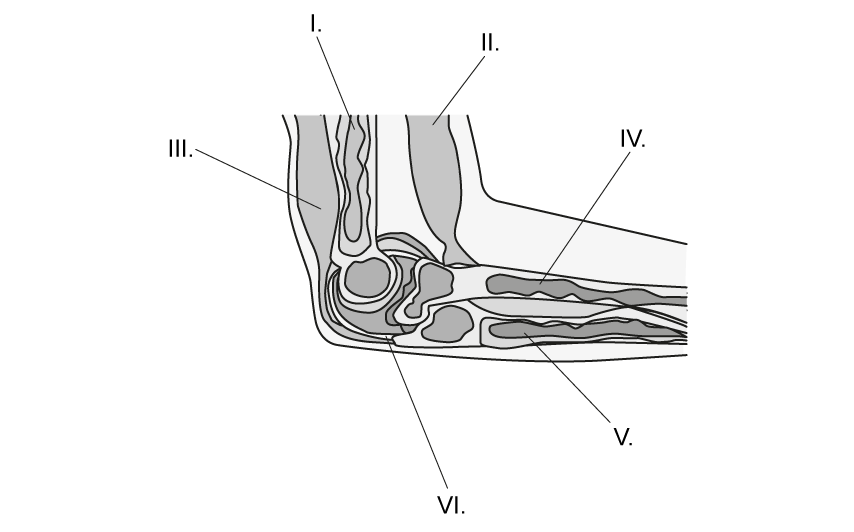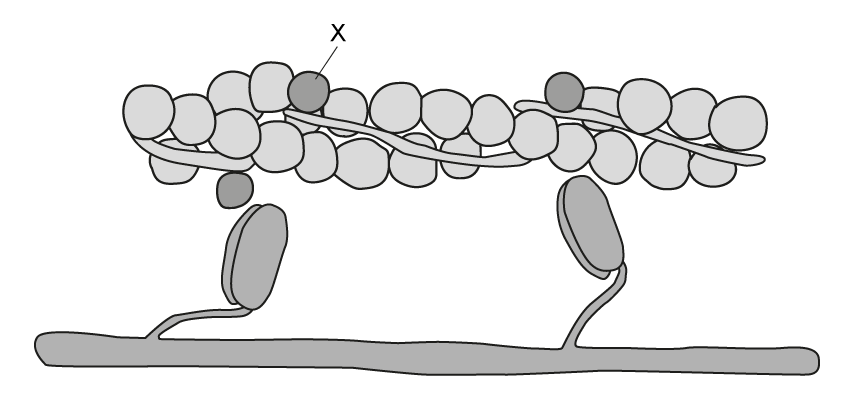Question 1
Identify which of the following joints allows abduction and adduction movement.
Shoulder
Knuckle
Knee
Elbow
Identify which of the following joints allows abduction and adduction movement.
Shoulder
Knuckle
Knee
Elbow
The diagram shows the structures in a human elbow.
Which numbers represent a pair of antagonistic muscles?
I and II
V and IV
VI and II
II and III
Which row correctly identifies the features of the myofibril shown in the diagram.
| I. | II. | III. | IV. | |
| A | Z-line | Sarcomere | A-band | H-zone |
| B | H-zone | A-band | Z-line | I-band |
| C | Sarcomere | H-zone | I-band | Z-line |
| D | Sarcomere | I-band | A-band | Z-line |
Which of the given options accurately identifies molecule X and describes its function?
X is troponin which provides binding sites for calcium ions
X actin which provides binding sites for myosin allowing cross-bridges to form
X is tropomyosin which changes shape to expose binding sites on actin filaments
X is ATP hydrolase enzyme used to release energy through hydrolysis of ATP to ADP and inorganic phosphate
Which of the following explains the use of fluorescence to study muscle contraction?
I and III
I and II
I, II and III
II only